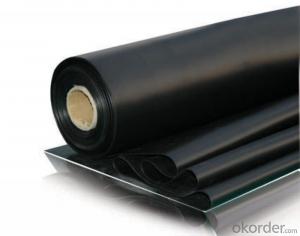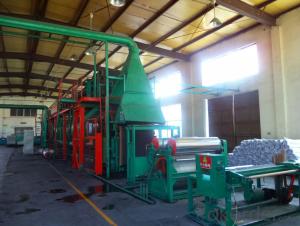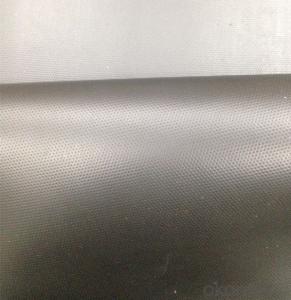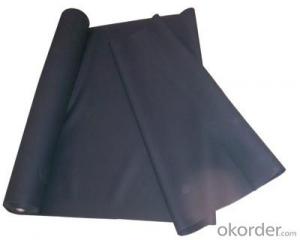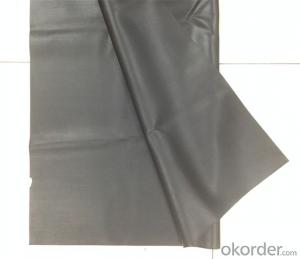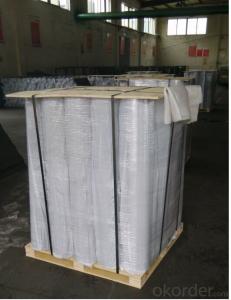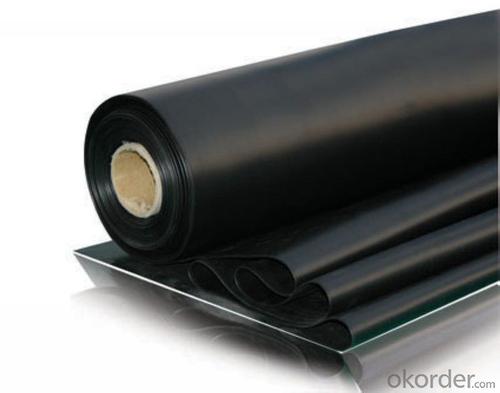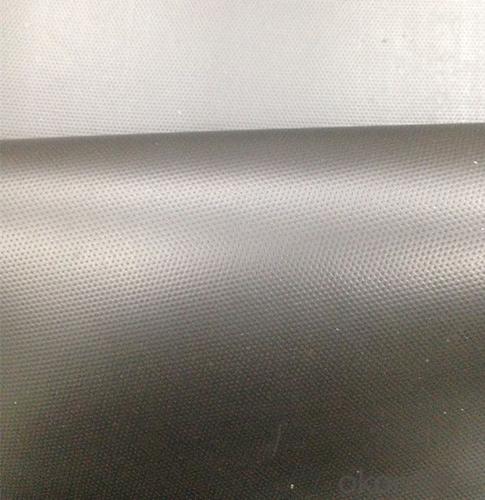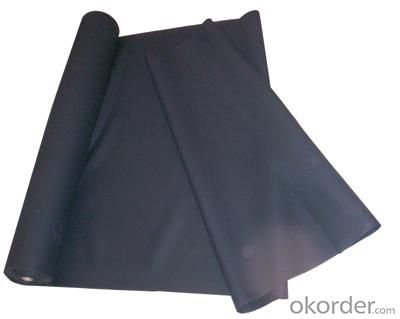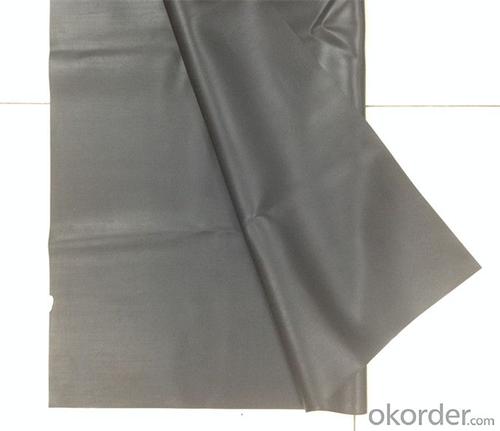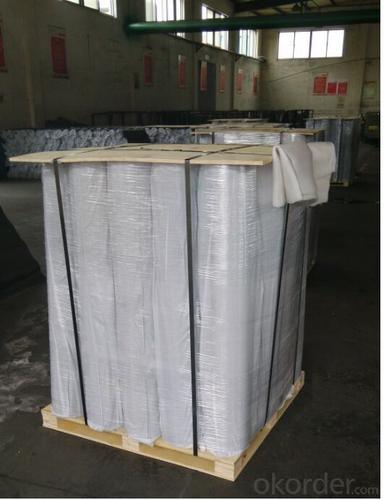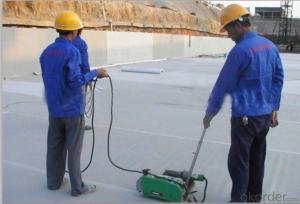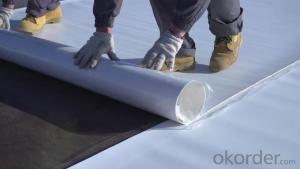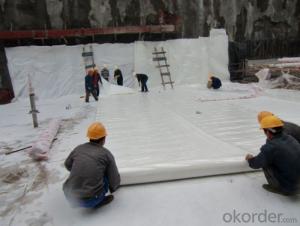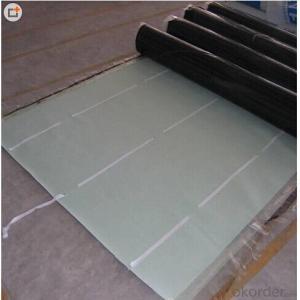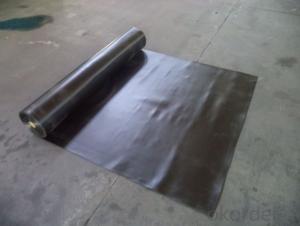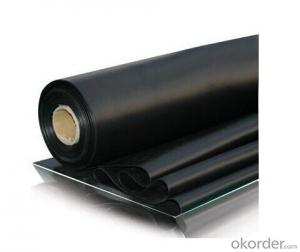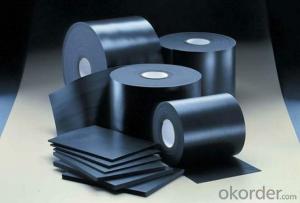EPDM Rubber Waterproof Membrane 1.2mm, 1.5mm, 2mm CMAX
- Loading Port:
- Qingdao
- Payment Terms:
- TT OR LC
- Min Order Qty:
- 4000 m²
- Supply Capability:
- 200000 m²/month
OKorder Service Pledge
OKorder Financial Service
You Might Also Like
EPDM Rubber Waterproof Membrane
Product Instruction:
EPDM waterproof membrane is made from ternary ethylene-propylene rubber,which is designed for waterproofing of exposed and non-exposed applications. EPDM waterproof membrane is of high elasticity among high polymer waterproof materials and becomes a world-popular waterproofing material.
CNBM own the wold-advanced equipment of cold feeding extrusion and continuous vulcanization technology. With the best performance among high polymer waterproof materials, EPDM is of exceptional elasticity and will not split or cracked under normal building movement.
Product Features:
-Excellent weather-ability, durability and size stability
-Good adaptability to high and low temperature, UV resistant and anti-corrosion
-High tensile strength and good elongation, accommodating to structure movement
-Easy installation, solid joint, and mo environmental pollution
-Good rooting penetration resistance
-Service life up to 50 years
Applications:
-Roof, basement, tunnel, pond liner, dam
-Industrial and civil building waterproofing
-Geosynthetic liner for fish ponds, swimming pools, channels, irrigation system
-Especially suitable for projects with high requirement in durability, anti-corrosion and deformation
Specifications:
-Width of roll: 1.2m, 2m, 4m
-Length of roll: 20m, 30m or customized
-Thickness of membrane: 1.2mm, 1.5mm, 2mm
-Type: vulcanized EPDM or welding EPDM
-Application: roof, basement, pond, lake, swimming pool, steel structure roofing, underground, tunnel, etc
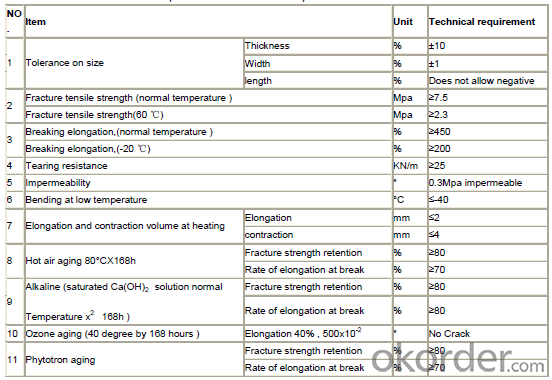
FAQ:
1. Is your EPDM waterproof membrane the real rubber?
Yes, our EPDM membrane is made from top quality rubber, which is imported from America. We support samples for testing, or testing in our factory.
2. How's your products quality?
Our EPDM is with the top quality at home and abroad. Our quality is much higher than Chinese standard. Our product is widely used in Chinese Central government projects. And it's also accpted by customers all over the world, such as EU, USA, Astrulia, etc.
3. What's the service life of your EPDM membrane?
The service life of our EPDM membrane is more than 50 years.
4.What's your MOQ?
Our MOQ is 3000M2.
5. What's your product ability of EPDM membrane?
We own the largest EPDM production line in China. Our product ability of EPDM membrane reaches 2 million square meter per year.
Photos:
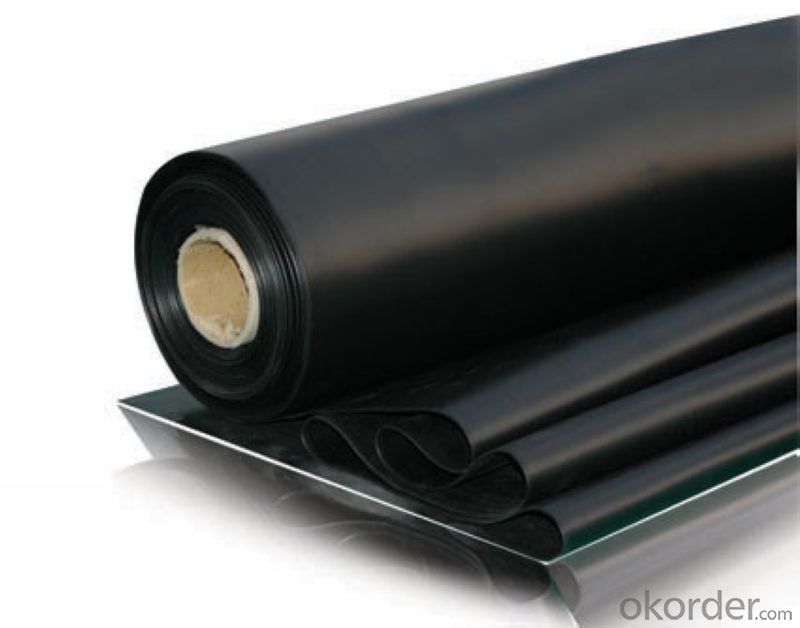
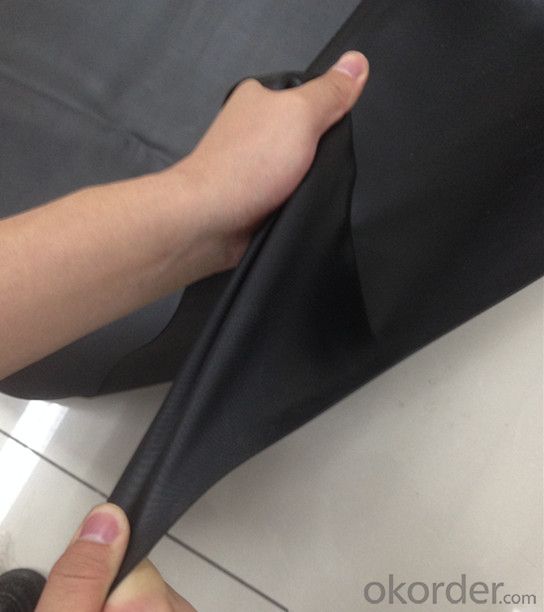
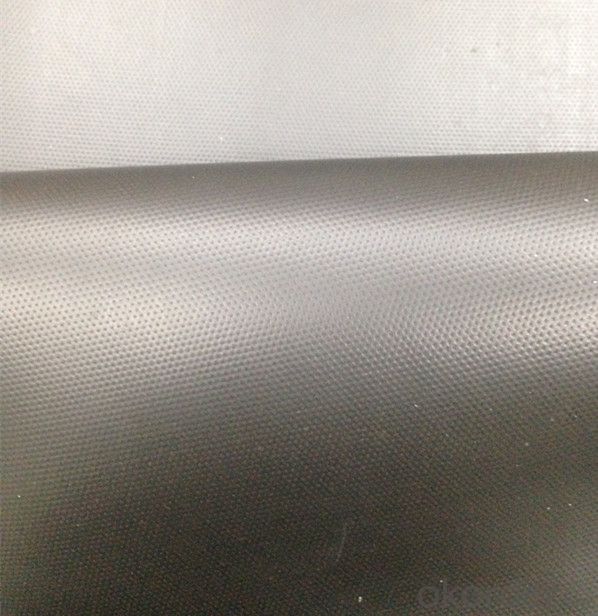
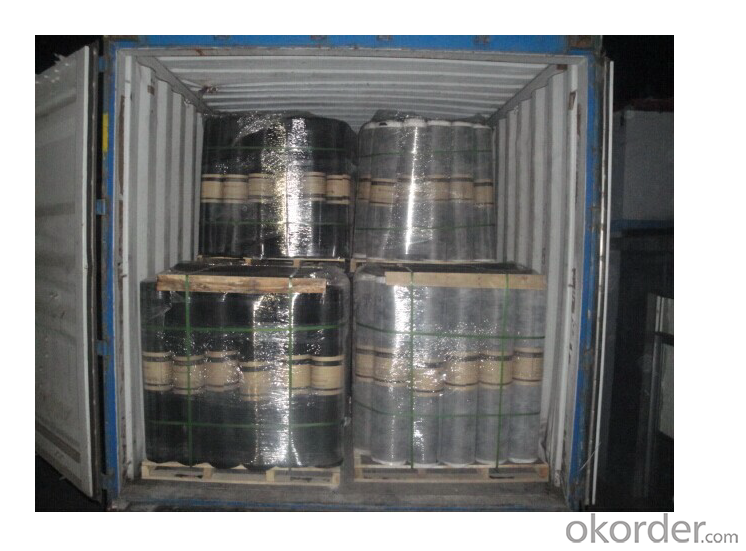
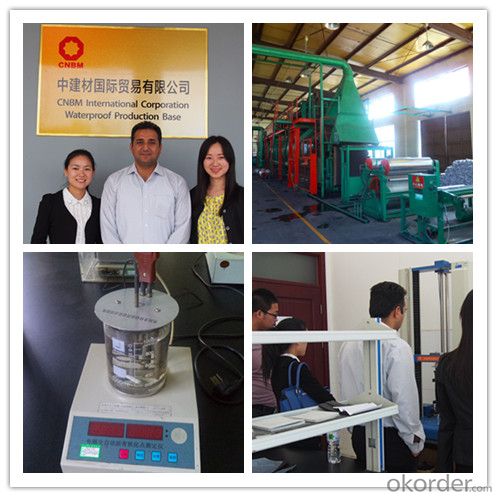
- Q: Can a waterproofing membrane be used for podium decks or plaza areas?
- Podium decks or plaza areas can benefit from the application of a waterproofing membrane. It is highly recommended to utilize this protective layer in order to safeguard the underlying structure from water-related harm. Given their exposure to the elements, podium decks and plaza areas are susceptible to water infiltration. By implementing a waterproofing membrane, water seepage into the lower layers can be effectively prevented, thus ensuring the long-lasting durability and structural integrity of the deck or plaza. Furthermore, this waterproofing membrane is also capable of shielding spaces beneath the deck or plaza, such as basements or parking garages, from potential water damage. Therefore, it is crucial to select a top-notch waterproofing membrane specifically designed for outdoor purposes, and to carefully adhere to the manufacturer's instructions regarding proper installation and maintenance.
- Q: Can a waterproofing membrane be tiled over?
- Yes, a waterproofing membrane can be tiled over. Tiling over a waterproofing membrane provides an additional layer of protection against water damage and helps create a durable and moisture-resistant surface.
- Q: Can a waterproofing membrane be used on precast stainless steel surfaces?
- Yes, a waterproofing membrane can be used on precast stainless steel surfaces. The waterproofing membrane will provide an additional layer of protection against water penetration, ensuring the longevity and durability of the stainless steel surface.
- Q: Can a waterproofing membrane be used on precast gypsum surfaces?
- Precast gypsum surfaces, commonly utilized in construction for various building components like walls and ceilings, can benefit from the application of a waterproofing membrane. Without proper protection, these porous surfaces are susceptible to water damage. To safeguard precast gypsum, a waterproofing membrane serves as a barrier, preventing water infiltration. By creating a protective layer, it halts the seepage of water into the gypsum, thereby averting issues such as mold growth and deterioration. Multiple types of waterproofing membranes are available in the market, including liquid-applied membranes, sheet membranes, and cementitious coatings. These versatile options can adhere effectively to precast gypsum and other surface materials. When employing a waterproofing membrane on precast gypsum, it is vital to ensure the surface is devoid of any contaminants that could hinder the membrane's adhesion. The application process should adhere to the manufacturer's instructions, taking into account factors like temperature, humidity, and drying time. In summary, the application of a waterproofing membrane on precast gypsum surfaces is indeed possible and highly recommended for protection against water damage. Selecting the appropriate membrane type and following proper application techniques are crucial for optimal efficacy.
- Q: Can a waterproofing membrane be used on steel surfaces?
- Yes, a waterproofing membrane can be used on steel surfaces. Waterproofing membranes are designed to provide a protective barrier against water and moisture, and they can effectively adhere to and seal steel surfaces, preventing water penetration and potential damage.
- Q: Can a waterproofing membrane be used on roofs with rooftop gardens?
- Indeed, rooftops with gardens can benefit greatly from the utilization of a waterproofing membrane. Employing a waterproofing membrane is strongly advised as it shields the foundational framework from harm caused by water. Given that a rooftop garden contributes additional weight and moisture to the roof, it is imperative to have a reliable waterproofing system in place to avert leaks and guarantee the roof's durability. The waterproofing membrane serves as a safeguard against water infiltration, effectively maintaining dry conditions for both the rooftop garden and the underlying structure.
- Q: Can a waterproofing membrane be used in crawlspaces or basements?
- Yes, a waterproofing membrane can be used in crawlspaces or basements. In fact, it is highly recommended to use waterproofing membranes in these areas to prevent moisture infiltration and water damage. Crawlspaces and basements are prone to water seepage and high humidity levels, which can lead to mold growth, structural issues, and damage to stored items. A waterproofing membrane acts as a barrier against water intrusion by effectively sealing the foundation walls and floor. It creates a watertight seal that prevents water from seeping into the space, keeping it dry and protected. Additionally, waterproofing membranes also help to control moisture levels by reducing condensation and humidity, thereby creating a healthier and more comfortable environment. Overall, using a waterproofing membrane in crawlspaces or basements is an essential measure to ensure the longevity and integrity of the structure and to safeguard against potential water-related problems.
- Q: Can a waterproofing membrane be used on plastic block surfaces?
- Yes, a waterproofing membrane can be used on plastic block surfaces. These membranes are designed to provide a protective barrier against moisture, preventing water from seeping through the surface. Plastic blocks, like any other surface, can be susceptible to water damage if not properly protected. Applying a waterproofing membrane can help seal and protect the plastic blocks, preventing water penetration and potential damage. It is important to choose a waterproofing membrane that is compatible with plastic materials and follow the manufacturer's instructions for application to ensure the best results.
- Q: Can a waterproofing membrane be used in conjunction with insulation materials?
- Yes, a waterproofing membrane can be used in conjunction with insulation materials. The membrane acts as a barrier to prevent water infiltration, while insulation materials provide thermal resistance to control heat flow. This combination is commonly used in construction to ensure both waterproofing and insulation performance.
- Q: Does a waterproofing membrane require any specific surface preparation?
- Yes, a waterproofing membrane does require specific surface preparation before installation. The success and effectiveness of the membrane largely depend on the quality and condition of the surface it is applied to. Firstly, the surface needs to be clean and free from any dirt, debris, oil, grease, or loose particles. This can be achieved by thoroughly cleaning the surface using a pressure washer, scrub brush, or appropriate cleaning agents. Any existing coatings or sealants should also be removed to ensure proper adhesion of the membrane. Secondly, the surface should be smooth and even. Any uneven areas, cracks, or holes should be repaired and leveled before applying the membrane. This can be done by filling the cracks or holes with a suitable filler or patching compound and smoothing it out to create a uniform surface. Thirdly, the surface should be dry. Moisture can compromise the adhesion and effectiveness of the waterproofing membrane. Therefore, it is important to ensure that the surface is completely dry before starting the installation. This may require allowing the surface to air dry or using appropriate drying methods such as fans or dehumidifiers. In addition to these general surface preparations, specific types of waterproofing membranes may have additional requirements. For example, some membranes may require a primer to be applied on the surface before installation. It is essential to follow the manufacturer's instructions and recommendations for the specific membrane being used. Overall, proper surface preparation is crucial for the success of a waterproofing membrane installation. It ensures optimal adhesion, durability, and performance of the membrane, ultimately preventing water penetration and protecting the underlying structure.
Send your message to us
EPDM Rubber Waterproof Membrane 1.2mm, 1.5mm, 2mm CMAX
- Loading Port:
- Qingdao
- Payment Terms:
- TT OR LC
- Min Order Qty:
- 4000 m²
- Supply Capability:
- 200000 m²/month
OKorder Service Pledge
OKorder Financial Service
Similar products
Hot products
Hot Searches
Related keywords
